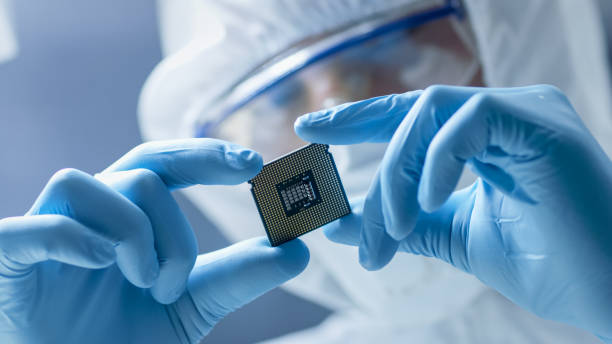With the continuous advancements in material science, there is a remarkable potential to tailor material surfaces and achieve desired functionalization, particularly in the realm of bioconjugates. This includes a diverse range of surfaces such as nanoparticles and polymers, which can now be linked with various biomolecules including carbohydrates, DNA, proteins, and others, opening up exciting new prospects.
In recent years, the intersection of material sciences and bioconjugations has led to significant progress and numerous applications. Hybrid materials resulting from this combination have found extensive usage in medicine, nanotechnology, and biotechnology. This article focuses on the advancements in bioconjugation-to-surfaces at an advanced level, considering the rapid development of both fields.
Bioconjugation onto surfaces is commonly accomplished by employing EDC-NHS chemistry on surfaces that contain amines. This method allows for the easy modification of surfaces such as Glass, nanomaterials, and polymers, enabling the inclusion of amines necessary for bioconjugation reactions.
Applications of Surface Bioconjugation
Given the wide variety of biomolecules and surfaces available for conjugation, it is understandable that these materials have a multitude of applications. In recent years, surface bioconjugates have expanded their use from research settings to industrial applications as well.
Bioconjugate materials are frequently utilized in various commercial methods like EPR, fluorescence imaging, microscopy, and spectroscopy experiments. The use of nanoparticles and polymers has notably grown due to their compelling properties.
Bioconjugation is a process that involves linking molecules to surfaces, and it has a wide range of applications, including biosensors, medical imaging, and drug delivery.
Utilisation of Surface Bioconjugates for Drug Delivery
Biological therapeutics are easily metabolized within the body, resulting in their limited effectiveness. To address this issue, bioconjugation to polymers can be employed to provide protection for the protein.
PEG, also known as polyethylene glycol, is commonly used to prevent protein degradation within the body, allowing the protein to perform its intended function uninterrupted. Additionally, PEG can mitigate or eliminate immune reactions.
Bioconjugation on polymer surfaces can prevent protein degradation during storage, whether it is due to cooling or heating. Several comprehensive reviews are now available that discuss the use of bioconjugate protein-polymer therapeutics and custom bioconjugation services.
Surface Bioconjugates
The capacity to attach biomolecules to nanoparticle surfaces has provided opportunities for various biosensors. The progress in polymer chemistry has enabled the targeted modification of diverse polymer surfaces, making them suitable for producing custom bioconjugates.
Conducting polymers have been utilized in the creation of electrochemical biosensors that specifically detect biomolecules such as DNA. The researchers have successfully developed a method to modify polyfluorene nanoparticles, ensuring their stability in different environments for rapid DNA detection. This newfound capability in assay development holds significant potential in gene therapy, medical diagnosis, and various biological research endeavors.
An intriguing case that I came across involved developing DNA-based sensors to identify Bacillus Cereus, a bacterium known for generating a variety of potent toxins. This particular bacterium is often found in food items such as baby formula, making the need for rapid detection highly desirable. The researchers opted to employ polypyrrole to create a biosensor based on single-stranded DNA.
Quantum Dot Bioconjugates
Quantum dots represent an innovative form of nanomaterial that can be tailored to meet specific requirements based on their functionalization. These semiconducting nanoparticles possess fascinating electronic and optical characteristics, along with remarkable stability.
